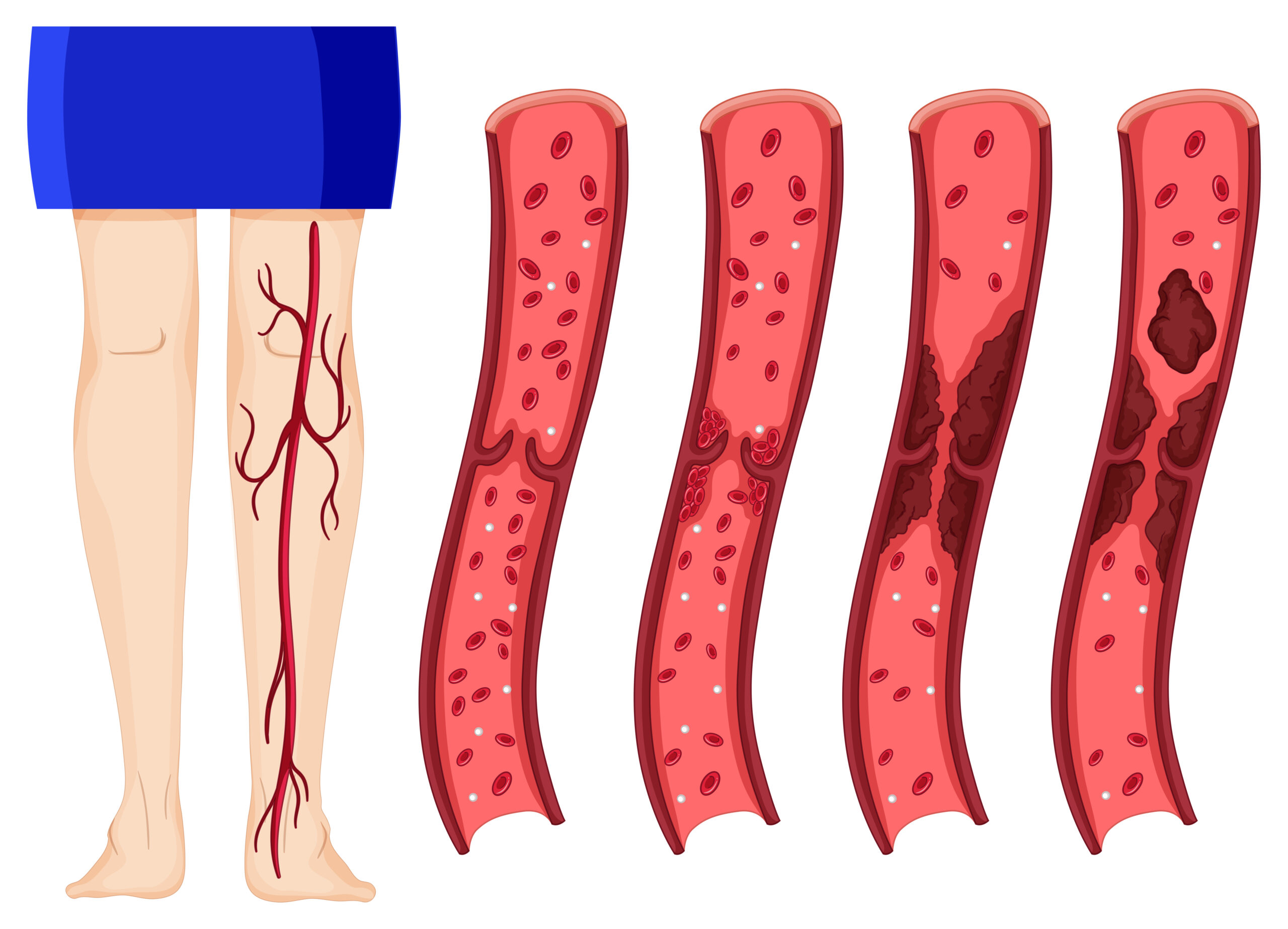7 Risk Factors for Deep Vein Thrombosis

Deep vein thrombosis (DVT) is a medical condition that occurs when a blood clot forms in a deep vein, usually in the lower leg. A person with DVT will have pain and swelling in the lower leg or foot. Sometimes the pain is severe enough to prevent walking.
Left untreated, the condition can lead to a pulmonary embolism which is when one or more clots migrate to your lung and cut off your body’s supply of oxygen.
To reduce your risk of developing deep vein thrombosis, read about the seven primary risk factors for this condition and when to refer to a vein specialist.
What is DVT & How Does It Develop?
Deep vein thrombosis (DVT) occurs when a blood clot forms in the deep veins of the leg (within the muscle veins). It’s a serious condition that can lead to pulmonary embolism (PE), which occurs when a blood clot travels to the lungs and blocks an artery. This is different to superficial thrombophlebitis (STP), which is also a common condition that affects the veins of the legs. However, superficial thrombophlebitis refers to a clot that forms within the superficial veins (ie under the surface of the skin).
The causes of DVT are:
- Long periods of immobility, such as being bed bound after surgery or having a long-distance flight.
- Conditions that cause damage to veins such as trauma.
- Conditions that increase the ‘thickness’ of the blood or increase its tendency to form clots. These can be inherited conditions (thrombophilia) that can be identified with blood tests. It’s also associated with pregnancy, obesity, and hormone replacement therapy.
The main symptoms of DVT are the rapid onset of swelling and pain in your leg or thigh. The area may feel warm to the touch. You may also have pain in your calf muscle. Other symptoms include:
- feeling tired for no reason.
- feeling breathless.
- chest pain, especially with inspiration (breathing in).
- coughing up blood-stained sputum.
Note that deep vein thrombosis can develop without any typical symptoms.
7 Risk Factors for DVT
Deep vein thrombosis can develop with no outward signs of illness. If you have more than one risk factor for DVT, knowing what those risk factors are is the first step in safeguarding your health.
Anyone is susceptible to developing deep vein thrombosis (DVT). However, the following factors enhance your odds:
- Injuries to the veins caused by trauma
Clotting (coagulation) is your body’s natural technique for halting bleeding at the site of tissue damage, so if you have a severe vein injury, you’re more likely to develop a DVT. Injuries to the deep veins in the legs, such as a complicated bone fracture or significant muscular damage, can also cause deep vein thrombosis.
- Use of oral contraceptives or hormone replacement therapy
Using birth control pills or hormone replacement therapy increases the risk of developing blood clots, including DVT and pulmonary embolism (PE). In addition, women who use oral contraceptives may be more likely to develop DVT than those who do not.
- Pregnancy and childbirth
Women who have recently given birth or are pregnant have an increased risk of developing DVT. This is because, during pregnancy, your body produces more estrogen, which helps blood clot more easily than usual. After childbirth, some women may develop blood clots in their legs due to a condition called superficial thrombophlebitis which usually clears up on its own after several weeks or months. But if you develop swelling and pain in your calf that doesn’t go away within a few hours or days after childbirth, see a vein specialist immediately, as this could be an early sign of DVT or postpartum thrombophlebitis.
- Age
DVT can occur at any age. However, it most commonly strikes middle-aged and elderly people. After age 50, your chance of developing a DVT is effectively double that of a younger adult. For the remainder of your life, you’ll be doubling your risk every decade.
- Obesity
Research suggests that the risk of DVT is doubled in middle-aged and older persons who are overweight. The risk of developing DVT is five times higher in those under the age of 40 who have a very high body mass index (BMI) compared to those who have a healthy weight.
- Recent surgery or injury
Surgery or injury can cause damage to veins, increasing your risk of developing DVT after surgery.
- Prolonged immobility
Prolonged periods of sitting, standing, or being bedridden can increase your risk of DVT because these activities increase blood pressure in your legs, which can cause clots to form in your veins. Long plane rides and car trips also increase this risk because you’re likely to be seated for several hours at a time without much movement.
Takeaway
DVT is a serious medical condition that can lead to pulmonary embolism, which can be fatal if left untreated. Knowing the risk factors for DVT is essential, so you can take steps to prevent it and seek treatment if necessary.
Deep vein thrombosis can be a dangerous and debilitating condition. But with the right DVT treatment, you can return to your old self in no time! The first step is to visit a vein specialist who will assess your risk factors for DVT and recommend the best course of action.










